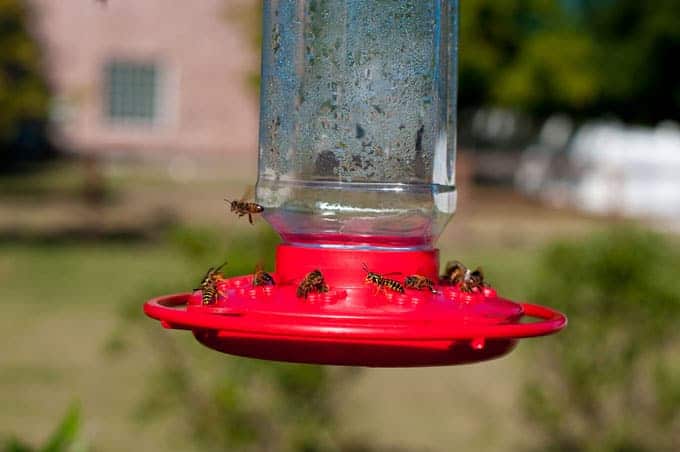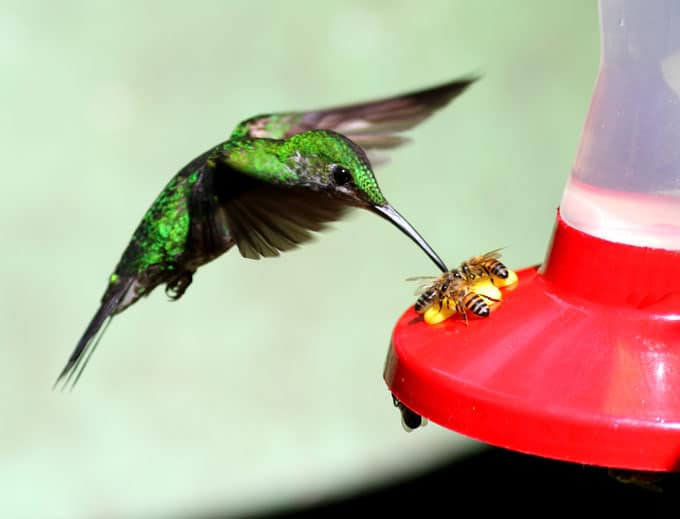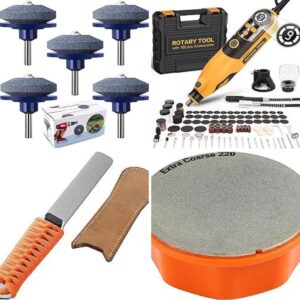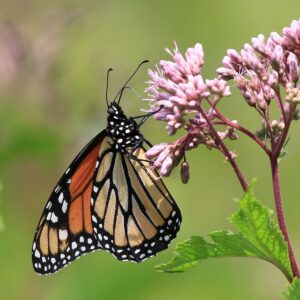Hummingbirds and bees like to share the same environments and are often found in close proximity to one another in your garden. The very same nectar recipe that will attract hummingbirds to a feeder will attract insects like bees, ants, wasps, and a variety of others. Ideally, you want to keep bees and other insects out of your hummingbird feeder and keep the birds from competing with the bees for food.
Sometimes hummingbirds and bees are able to feed together in harmony, however, if too many insects get into the feeder, they will contaminate the food and keep the hummingbirds away.
It is important to find ways of keeping the bees away from your hummingbird feeder that will be safe and simple. Since bees play such a vital role in many ecosystems, you want to keep them away from your feeder in the most cautious and safe way possible.

Read Next
- Guide On How To Keep Bees Off Hummingbird Feeders
- Step 1: Choose The Right Feeder Design
- Step 2: Avoid Yellow-colored Feeders
- Step 3: Relocate Your Hummingbird Feeder
- Step 4: Keep The Hummingbird Feeder Clean
- Step 5: Use Insect Traps Sparingly
- More Tips On How To Keep Bees Off Hummingbird Feeders
- Things You Should Avoid While Keeping Bees Away
- 💬 Feedback
Guide On How To Keep Bees Off Hummingbird Feeders
Step 1: Choose The Right Feeder Design



Some hummingbird feeders are designed in such a way that insects have trouble getting to the food inside because the hummingbirds can use their long tongues to easily access the sweet nectar.
There are many accessories available that can be added to your current hummingbird feeder to safely keep away any unwanted pests. Some feeders come standard with the bee guard or ant moats around it, so if you are in the market for a new feeder opt for one of these feeders to keep your hummingbird’s food free from bees.
Step 2: Avoid Yellow-colored Feeders



Bees and wasps are attracted to yellow and fins red unappealing. Avoid buying a feeder that has yellow color on it, as well as resembles a flower of any kind. This will make the feeder less attractive to bees and they will be more likely to avoid the feeder.
If your current feeder has any red accents on it, you can either remove them if they do not affect the structure too much, or you can paint them with non-toxic red paint.
Step 3: Relocate Your Hummingbird Feeder



Moving the feeder just a few feet can drastically reduce the number of bees that visit. When a hummingbird finds a food source, it will continue to revisit the same place in the future and will look around nearby for other food sources.
Oppositely, insects will only visit a food source that is convenient and are less likely to go looking for other food sources nearby. Move your feeder to minimize bee visitors without affecting the hummingbird population.
Every time you refill your feeder, move it to a different location in the garden. You can even have a few feeders and move them around from time to time to safely discourage bees from taking over your feeders.
Step 4: Keep The Hummingbird Feeder Clean
Keeping the hummingbirds’ feeder clean is also vital for keeping away the bees. If the feeder is too full, it will leak nectar onto the outside of the feeder, attracting the bees. Additionally, the hummingbirds may drip nectar onto the outside of the feeder while they eat.
This is an open invitation for the bees to join in the meal. Keep the feeder clean and avoid over-filling it to reduce the amount of nectar on the outside of the feeder. This is a simple and safe way to prevent the bees from tucking into your hummingbirds’ dinner.



Step 5: Use Insect Traps Sparingly
While using an insect trap near your feeder can be an effective deterrent, be careful not to use too many as this will upset the natural balance in your garden’s ecosystem.
Place them near the feeder but far enough away that it will not affect the hummingbirds. As soon as the insects are no longer a problem, remove the insect trap. You can always replace it if the bees or other insects return.
More Tips On How To Keep Bees Off Hummingbird Feeders
Hanging your feeder in the shade will also help to keep away the bees since they prefer to feed in full sunlight. The feeder will be less attractive if it is in a shadier spot plus, the nectar will remain cooler, slowing the fermentation process and reducing any leaks.
If you don’t want to completely get rid of bees in your garden but keep them out of the hummingbirds’ nectar, creating substitute feeders and attractions for them. A yellow feeder in a sunny part of your garden will do just the trick.
Bees will enjoy a sweeter sugar solution, so treat them with something sweeter than the hummingbirds’ nectar. You can also plant flowers that attract bees and provide them with food, which they can in turn pollinate. This will help to keep your garden healthy, while carefully controlling bees and keeping them away from your hummingbirds’ feeder.
In addition, avoid piles of manure in your garden as well as uncovered trash with sticky soda cans that will attract bees and other insects to your garden unnecessarily. This can increase insect populations in your garden and cause a problem with keeping them off the bird feeders.
Things You Should Avoid While Keeping Bees Away
While the above-mentioned techniques may only work in combination with one another, there are some methods you should avoid entirely.
- Oils and insecticides are potentially destructive to hummingbirds and should be avoided when trying to keep bees away from feeders.
- Insecticides are essentially poison, and even the smallest amount to a small hummingbird can be fatal.
- Avoid pesticide sprays near the feeder and rather opt for insect traps that you can place away from the feeder.
- Oils like cooking spray, olive oil, petroleum jelly, and the like are often used to prevent insects from getting near the feeder. However, these substances can harm hummingbirds as they can stick to their feathers, making it difficult to fly and preen.





Comments
No Comments